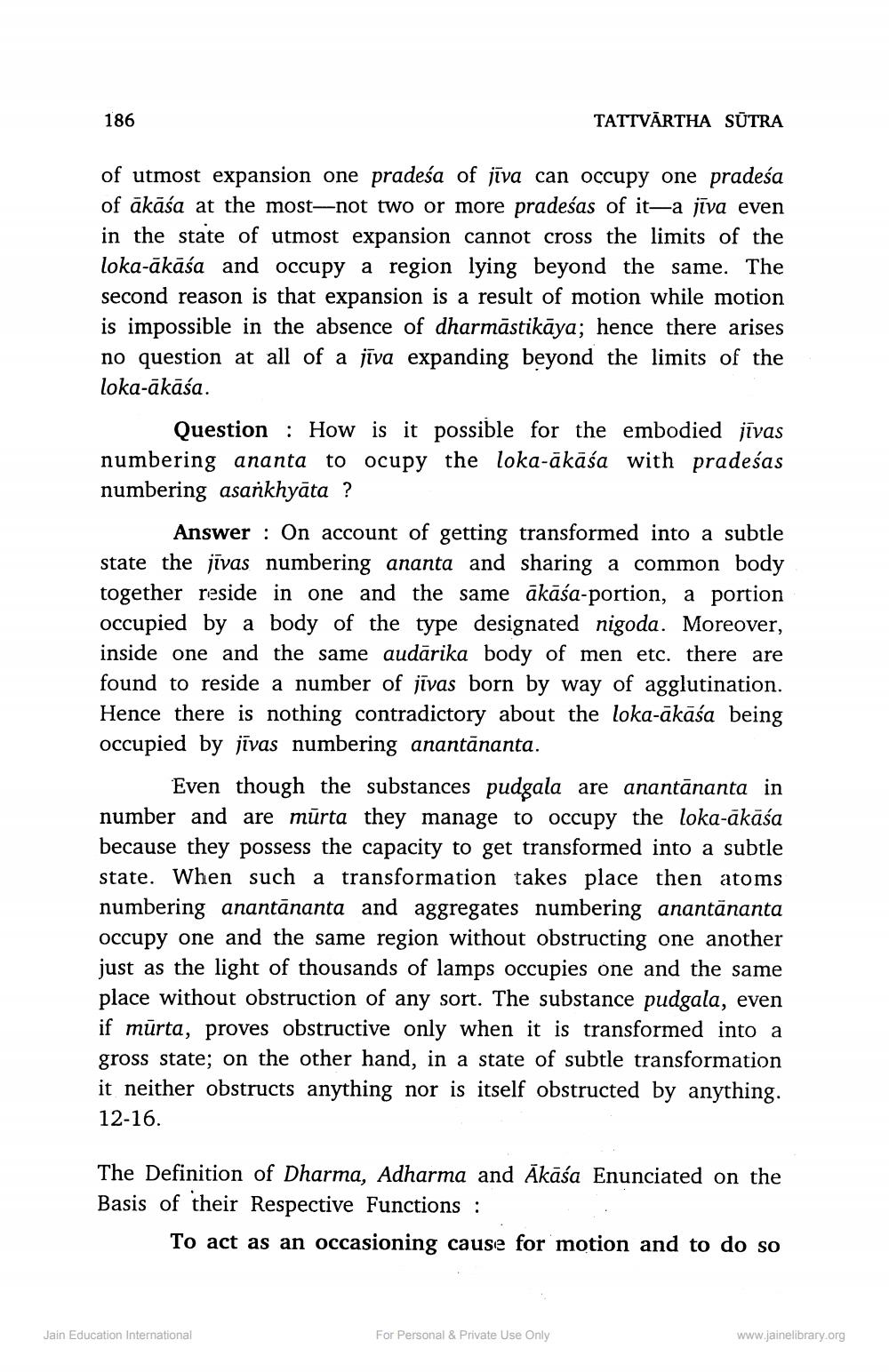________________
186
TATTVĀRTHA SŪTRA
of utmost expansion one pradeśa of jīva can occupy one pradeśa of ākāśa at the most-not two or more pradeśas of it—a jīva even in the state of utmost expansion cannot cross the limits of the loka-ākāśa and occupy a region lying beyond the same. The second reason is that expansion is a result of motion while motion is impossible in the absence of dharmāstikāya; hence there arises no question at all of a jīva expanding beyond the limits of the loka-ākāśa.
Question : How is it possible for the embodied jīvas numbering ananta to ocupy the loka-ākāśa with pradeśas numbering asankhyāta ?
Answer : On account of getting transformed into a subtle state the jīvas numbering ananta and sharing a common body together reside in one and the same ākāśa-portion, a portion occupied by a body of the type designated nigoda. Moreover, inside one and the same audārika body of men etc. there are found to reside a number of jīvas born by way of agglutination. Hence there is nothing contradictory about the loka-ākāśa being occupied by jīvas numbering anantānanta.
Even though the substances pudgala are anantānanta in number and are mūrta they manage to occupy the loka-ākāśa because they possess the capacity to get transformed into a subtle state. When such a transformation takes place then atoms numbering anantānanta and aggregates numbering anantānanta occupy one and the same region without obstructing one another just as the light of thousands of lamps occupies one and the same place without obstruction of any sort. The substance pudgala, even if mūrta, proves obstructive only when it is transformed into a gross state; on the other hand, in a state of subtle transformation it neither obstructs anything nor is itself obstructed by anything. 12-16.
The Definition of Dharma, Adharma and Ākāśa Enunciated on the Basis of their Respective Functions :
To act as an occasioning cause for motion and to do so
Jain Education International
For Personal & Private Use Only
www.jainelibrary.org




